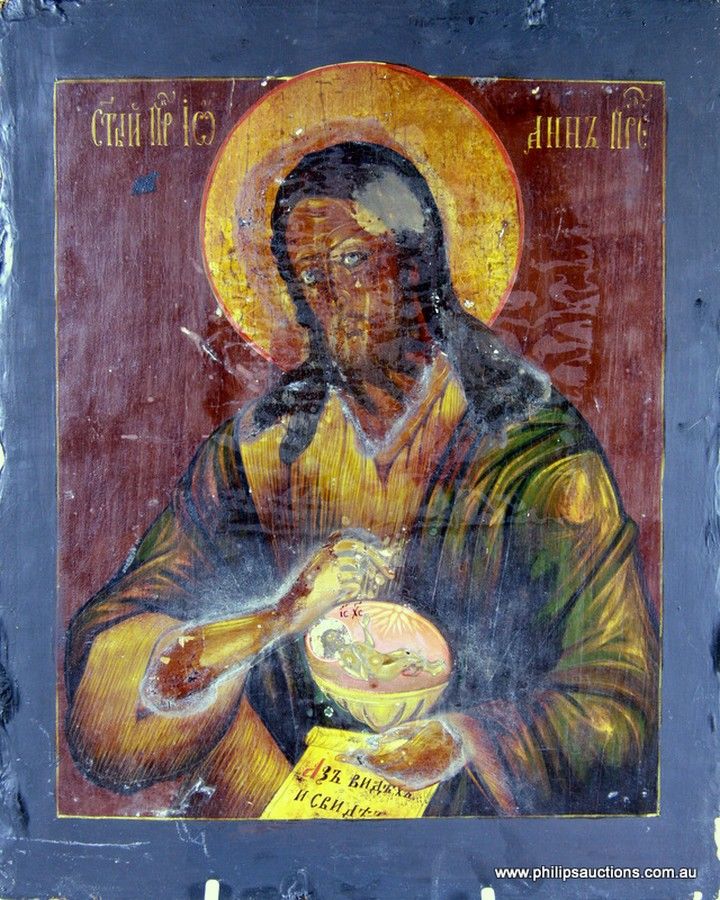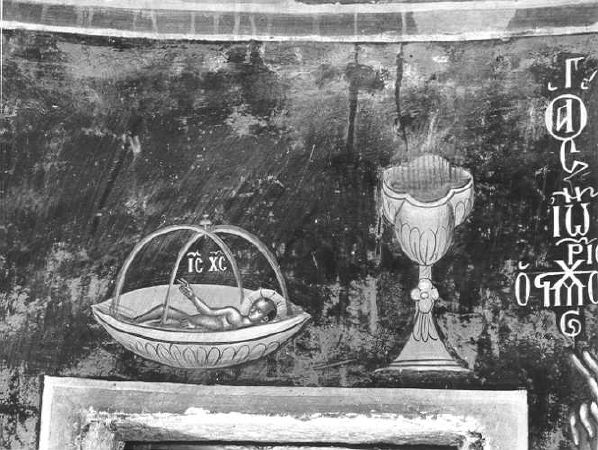My favorite memories of the church are always at night or in the early morning before the sun has risen. My favorite pictures of the church are always those that play black and gold against each other: the gold of the icons, flickering in the candlelight; the black of the shadows of the church; the pinpricks of light dancing from every surface; the gold of the haloes shining round darkened faces. To me, it makes accessible this strange interplay between revealing and concealment that is at the heart of the liturgy: it shows us how this interplay is inscribed on the architecture of our churches, and most especially in the iconostasis.
I look back at the history of the church, and I see its beginnings in hurried gatherings in its members’ homes. Nothing to see here; just some friends getting together; the Body and Blood of our Lord consecrated and carried out on the streets by careful, hiding hands. In those days Christians took the Gifts home with them for a private, reverent consumption each morning before the day began, enough to last all week. Then St. Constantine lifted the fear of persecution and Christians’ worshipping places grew visible. Celebrations on the tombs of the martyrs demanded shelter, and so churches sprouted over those graves. The iconostasis—first a simple railing, a hint to influence motion rather than any real barrier—began to grow. Over the centuries it took to itself the icons of the saints, the Lord, the divine. As the Church spread northward, to lands with abundant forests and abundant wood, so the iconostasis grew higher and higher, row upon row of icons reaching to the top of the arched ceilings. More holiness! More glimpses of heaven! The never-ending attempt to approach the impossible goal of circumscribing the Uncircumscribable. Of course we cannot do it, but surely we could come a little bit closer this time…
The iconostasis has always had a paradoxical function. It is necessary to support the icons which enable the viewer to see the reality of heaven, but by its very support it blocks the viewer’s gaze. This paradox became even more visible in the eleventh century. At this time, the Royal Doors in the center of the iconostasis were veiled by a curtain during the consecration of the elements in the Divine Liturgy. Reverence for the presence of our Lord in the Gifts took the form of shielding our eyes. The early Christians, taking the consecrated Gifts home and storing them in a dedicated house cupboard, expressed their love and devotion by tender, intimate touch. They were encouraged to take the Holy Body into their hands, pressing it against their eyes and hands before they consumed it, recognizing the presence of the Lord as fully as possible before taking Him into their very being in consumption. But later that same reverence took on a different form. Now worshippers fell flat on their faces in joy and awe and averted their eyes from the contents of the holy Chalice.

At the same time that the West began to elevate the Bread after its consecration, holding it high over the priest’s head and ringing a bell so that all the faithful could gaze upon it and worship the present Lord with their reverent gaze, the East veiled the mystery in layer upon layer of beauty. But that the veil has always communicated as well as shielded is evident from the appearance of the melismos (μελισμός, fracturing or division) icon. This icon, of which there is no known antecedent or parallel in the West, appeared first in southern Greece and then spread throughout the East, from Crete to Romania. Just as the veiling of the Doors was complete, this icon was often placed on the iconostasis over the very Doors themselves, or on the sanctuary wall behind the altar. It depicts Christ—often as a living infant, though sometimes as a dead adult—reclining on the golden diskos or diving into the golden chalice. This icon reveals to us the nature of sacramental vision within the Church. Stare as hard as we may at the actual Gifts, all we will see is the precious Bread. But the Church erects a solid wall of wood so that the hand of the iconographer can display to our eager eyes reality: the One Lord, humble and divine, giving all of Himself into the hands of His ordinary people, sanctifying those hands forever.
So it is not right to say that the iconostasis hides the altar from those outside it, any more than a sign is placed at an intersection to shield the driver’s gaze. Visual interaction with the liturgy is so important to Orthodoxy that great efforts are made to direct the gaze, to intercept it, to harness and aid it at every step. As the clergy—themselves visual reminders of the work of the Divine in the liturgy—cover themselves with vestments which reveal as they hide, so the walls of the church sacrifice literal windows for sacramental ones, blocking our gaze of what is visibly there to reveal to our gaze what is really there.

Sarah Roumas received a bachelor’s degree in physics from Harvard University, a master of theological studies and a master of theology degree from Holy Cross Greek Orthodox School of Theology in Brookline, Massachusetts, and a Ph.D in liturgical theology from the University of Notre Dame. She studies the development of the Byzantine liturgical books and biblical interpretation in Byzantine hymns. Her dissertation was on the hymns of Lazarus Saturday in Greek manuscripts of the Triodion. She is currently a postdoctoral fellow at the University of Notre Dame in South Bend, Indiana, where she attends St. Andrew’s Greek Orthodox Church and lives with her husband Nicholas and baby son, Anthony.


